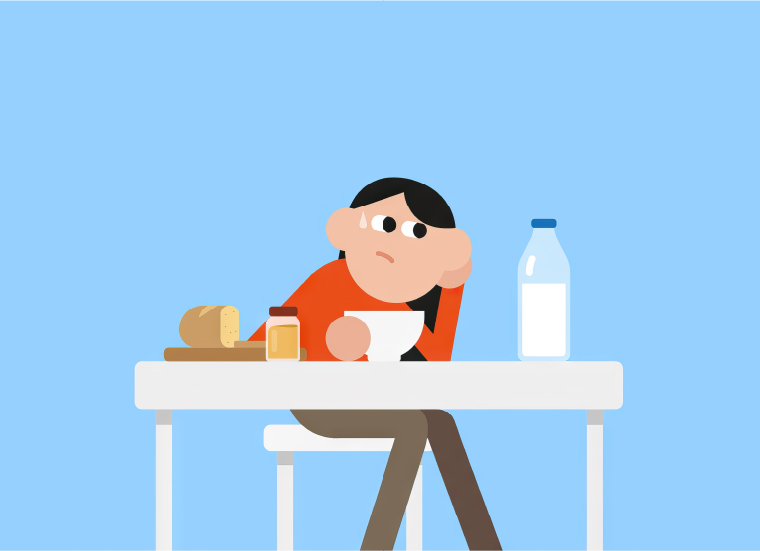
“STRESS REMAINS LARGELY TABOO”
Publié il y a 3 mois
06.02.2025
Partager
More and more people are stressed at work, according to a survey conducted by the Swiss Federal Statistical Office. Today, 23% of respondents are affected, which represents a 5% increase over the last ten years. Working conditions play a major role in people’s health. Yet, this disorder is not always taken seriously. By affecting so many individuals, it becomes almost banal and often underestimated. Wrongly, according to Aurélie Lattion, PhD in Neuroscience and Coordinator of the Swiss Stress Network platform.
IN VIVO How do you define stress?
AURÉLIE LATTION Stress is a normal physiological response to a challenge or threat, it is essential for our survival. It becomes problematic when it becomes chronic or too intense, as in the case of a trauma, and becomes responsible for a range of adverse effects.
IV What are the most common misconceptions about this condition?
AL Stress is often perceived as a purely negative reaction or simply as fear or anxiety. In reality, stress is a simple physiological reaction to a given environment. When it causes suffering, stress remains largely taboo and falsely associated with an inability to manage one’s ill-being.
IV How do these perceptions influence stress management?
AL If stress is seen as a weakness, people who suffer from it may be reluctant to talk about it or ask for help. This stigma complicates data collection in research, prevents the development of real prevention strategies, and contributes to superficial policies. Today, in Switzerland, burnout is not always recognised as an occupational disease, although it is costly both economically and on the human level.
IV What types of pathologies are usually associated with stress?
AL Stress can cause psychological problems such as burnout, anxiety, depression, but also physical problems such as cardiovascular or digestive problems. Some addiction problems are also directly related to stress. Recent studies also suggest a possible link to the worsening of neurodegenerative diseases such as Alzheimer’s.
![[Translate to Anglais:] IMAGE: DR](https://www.invivomagazine.ch/fileadmin/documents/pdf/LN_INVIVO_STRESS_Aurelie.jpg)
Aurélie Lattion is a PhD in Neuroscience and Coordinator of the Swiss Stress Network. The platform brings together more than 70 scientists working in different fields of stress-related research at Swiss universities.
IV Is there a predominant stress factor among the Swiss population?
AL The pressure to perform is a central factor. In this model, the ratio of constraints to resources is often out of balance, and the ability to suffer in silence is generally seen as a virtue, leaving little room for a healthy stress management.
IV Which populations are most affected?
AL Mostly people working in companies, where the problem can be better studied. Approximately 30% of employees report being emotionally exhausted, according to the Job Stress Index. Young people are not to be outdone. And contrary to what one might think, it is not the social networks that generate the most stress at home, but rather the academic pressure and uncertainty related to their professional future. A recent Pro Juventute study on the subject reveals that 40.7% of young people mention exams and 31.1% cite general pressure pertaining to performance.
IV How does stress affect children and adolescents?
AL It can permanently affect their social and emotional development, and the pandemic has exacerbated this situation. One of their greatest challenges is coping with high demands at school and home in a general context in which the future seems increasingly uncertain.
IV Can you tell us about the most significant impacts of stress on our society?
AL This pressure has a profound impact on individual health, which, in turn, impacts the entire social fabric, affecting interpersonal relationships, community cohesion, and of course, the economy. The economic impact is immense and measurable. Loss of productivity due to stress leads to considerable losses. In 2022, these costs were estimated at around 6.5 billion Swiss francs. This state of affairs highlights the urgency of integrating stress into human resource management policies and how work environments are organised.
IV What do you think is the most relevant way to strengthen prevention today?
AL The key is better communication among researchers, and between researchers and the general public. Misunderstandings need to be addressed, and a more integrated approach must be adopted, taking into account both prevention and solutions adapted to different contexts, whether in the workplace, school, or everyday life.
Swiss Stress Network brings together more than 70 scientists working in different fields of stress-related research at Swiss universities.
www.stressnetwork.ch



![[Translate to Anglais:] IMAGE: ERIC DUBOST/ALAMY](https://www.invivomagazine.ch/fileadmin/_processed_/6/c/csm_Olga_Sidiropoulou_c_Eric_Dubost_slash__Alamy_2294874aef.jpg)
![[Translate to Anglais:] [Translate to Anglais:]](https://www.invivomagazine.ch/fileadmin/_processed_/a/3/csm_LN_INVIVO_Stress_02_140b28d03c.jpg)